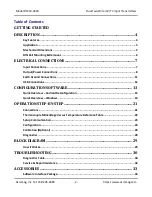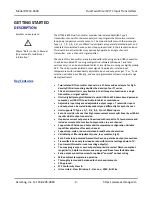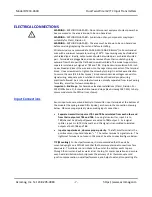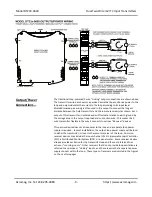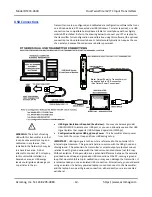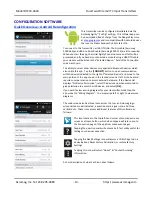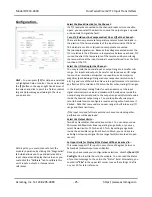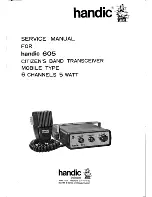
Model DT233-0600
Dual Two-Wire mV/TC Input Transmitters
Acromag, Inc. Tel: 248-295-0880
- 11 -
http://www.acromag.com
- 11 -
https://www.acromag.com
Output/Power
Connections
…
This model includes an extra termination screw at each output
marked “C” which
is
intended to provide a convenient tie
point for a “sourcing” wiring variation as
shown below. The C terminals do not connect to the internal circuit but are used to
simply join wired connections. Use of this terminal in your wiring scheme allows
you to connect external power local to the tr
ansmitter and form a “sourcing” entity
from this “sinking” output as shown
below.
Earth Ground Connections
IMPORTANT:
A USB isolator is
recommended when configuring
or calibrating a unit to avoid the
ground loop that occurs if your
input signal is also earth grounded
(A PC commonly ties earth ground
to its USB port signal and shield
ground, which is held in common
to the input circuit ground of this
transmitter).
The unit housing is plastic and does not require an earth ground connection to
itself.
If the module is mounted in a metal housing, an earth ground wire
connection to the
metal housing’s ground terminal (green sc
rew) is usually required
using suitable wire per applicable codes. As a rule of good practice, isolated circuits
are normally earth grounded at one point. See the Electrical Connections Drawing
for Output/Power connections and note the traditional position of earth ground for
a 2-wire output current loop. That is, earth ground is normally applied at the output
loop power minus terminal and in common with the loop load or loop receiver
minus terminal. The Type II transmitter output terminals will have a
“
floating
”
connection relative to earth ground and their potential varies with the voltage drop
in the load and connection wire. Circuits wired to isolated analog inputs should be
earth grounded as reflected in their input connection diagram. Ground connections
noted are recommended for best results and help protect the unit and its isolated
circuitry by giving it a low impedance path to ground for shunting destructive
transient energy away from sensitive module circuitry. Respect the traditional
position of earth ground in a two-wire current loop and avoid inadvertent
connections to earth ground at other points in the same loop, which would drive
ground loops and negatively affect operation.


